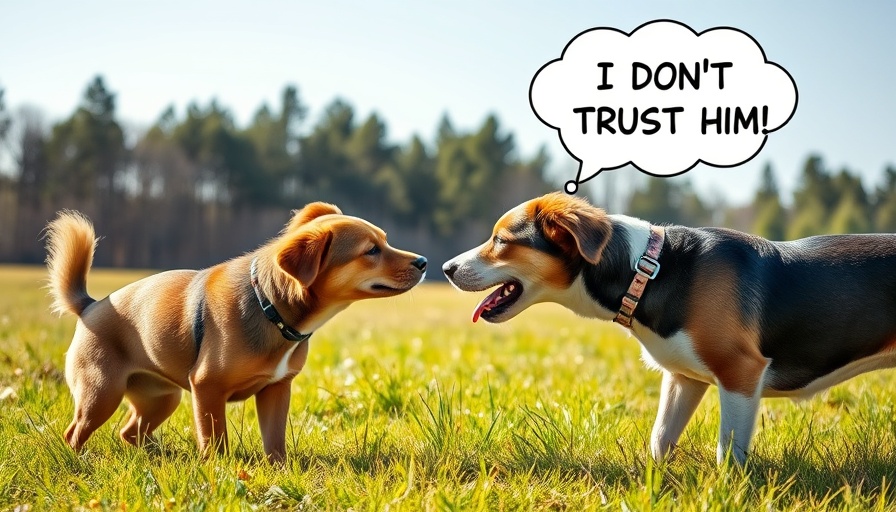
Reading the Subtle Signs: Why It Matters
Understanding your dog's body language is not just about training; it's about creating a deeper bond with your furry friend. Dogs communicate primarily through their bodies, conveying emotions through their tails, eyes, and posture. By tuning in to these signals, pet owners can better meet their dog's needs, leading to a healthier and happier relationship. Imagine walking your dog in the park, and instead of just enjoying the scenery, you are able to interpret whether your pet is joyful or anxious based on their body language.
In 'Understanding Your Dog's Body Language,' the discussion dives into the significant cues that dogs convey through their bodies, exploring key insights that sparked deeper analysis on our end.
Tails Tell Tales: More Than Just Wagging
The classic image of a tail wagging for a happy dog can be misleading. A slow, sweeping wag often indicates relaxation, while a quick, stiff wagging tail may signal excitement or stress. Recognizing these differences can help pet owners respond appropriately. If you notice your pooch with a tail tucked under, it might be time to give them space or comfort.
Posture and Facial Expressions: A Window to Their Soul
Your dog’s posture speaks volumes. A relaxed stance often means they’re feeling at ease, while a hunched figure typically signifies fear or anxiety. Equally important are their facial expressions—soft eyes and relaxed mouths are good signs, whereas wide eyes and a tense mouth can mean your dog is feeling threatened. Remember, when you’re aware of these subtle cues, you’re not just a pet owner; you’re a compassionate caregiver.
Common Misconceptions: Debunking the Myths
One common misconception is that a wagging tail equates to a happy dog. This impression overlooks the emotional spectrum that tail movements can represent. As pet owners, being educated about these signals can prevent misunderstandings that may lead to anxiety or fear in our pets.
Making Sense of Anxiety: What You Can Do
To help your dog feel secure, observe their behavior during stressful situations. If they lick their lips or avoid eye contact, it’s a sure sign they need reassurance. By recognizing these signs early, you can provide comfort and calm your pet, creating an environment where your dog feels safe.
By learning to decode your dog’s body language, you foster a deeper connection and understanding of your best friend. The effort you put into observing and responding to their needs can lead to a more fulfilling companionship. If you found this information valuable, consider sharing it with other pet owners, because the more we understand, the better lives we can provide for our beloved pets.
 Add Row
Add Row  Add
Add 




 Add Row
Add Row  Add
Add 

Write A Comment